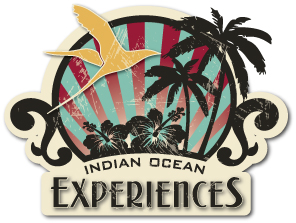
Christmas Island, whilst being quite remote and not overly large, is proud to boast an endemic hawk-owl. These little birds have persevered despite introduced pests, feral cats and extensive clearing of habitat for mining. My first real sighting of the hawk-owl was during our very first Bird & Nature Week in 2006. Resident biologist and guide for the week, David James, escorted the group to a well-known hawk-owl hang out on our local golf course. The group waited in silence whilst David played a tape on a small player, projected through a megaphone. As I listened to the whirring, scratchy call being played, I leant over to a friend and quietly declared that ‘no self-respecting hawk-owl was going to fall for that’. Within minutes, we had a bird calling back. A minute or so after that, David put the torch in the tree and clear as day for all to see, there was a hawk-owl calling to its heart’s content. We got a very good view of the bird, with one guest making the comment that ‘that was all too easy’. Within 20 minutes of arriving we were back in our cars and heading back to town. I thought to myself that these little guys are very accommodating, this will be a breeze.
David’s contract had finished on the island, so for our next Bird & Nature Week, I was front and centre for the hawk-owl activity, with assistance from another guide, Nic Dunlop. Again, went to the same spot, within minutes had the bird and many happy guests. I was soon to learn in subsequent years and hawk-owl tours, that this was not always going to be the case. A bit of rain early in the evening, too much moonlight or holding my tongue on the wrong side of my mouth meant that they just wouldn’t respond to the playback, or in some cases, respond but not come in close for a viewing.
After many, many times of listening to the call, trying for hours and tiring of fiddling with the equipment in the dark, I started mimicking the call. This was handy if the bird had responded and was sitting close for viewing, ensuring that it didn’t fly off before guests had a chance to see it. In some cases, I was finding that the birds were making an initial ‘settling in’ call that wasn’t on my playback, a series of gruff grumbles staking their territory, before they established their boobook type call. I found that if I mimicked that first call, the bird was more likely to stay and ‘chat’, then I continued with the boobook call to keep them interested.
Whilst almost always having to use the tape to initially get them to respond, I have noted if they are in the mood to acquiesce, that me mimicking them will keep them in position for viewing for a longer period. I find that by using my own call I can mimic their tone and volume more accurately, and mix up their call, like they might be doing ( our birds can have an extra hoot at the end of the call). It saves fumbling with the playback gear and the possibility of scaring the bird away if I don’t judge the volume correctly, or the Hilltop Hoods song, the next track on my Ipod, starts blaring inappropriately (Nosebleed Section follows Ninox natalis alphabetically on my device).
I have transferred this skill to some of our other birds on the island, allowing photographers and birdwatchers a better chance of seeing some of our birds. Our endemic white-eyes flit through the forest very quickly, but a little whistling call can bring them on to lower, closer branches whilst they investigate the call. Our very nervous Emerald doves take to the wing as soon as you get anywhere near them. I flushed one a couple of years ago but it luckily landed close by in tree. I could see it deciding if it needed to take off further into the bush and I indicated to a couple of serious Taiwanese bird photographers with me, to wait back. I mimicked the call I had heard in the forest many times and this bird settled on the branch and started calling back, its glorious iridescent emerald feathers shining in the sun, directly facing the photographers. I had a couple of very happy clients on that tour.
 Whilst I cant advocate for more or less playback for bird viewing, I really think you have to let yourself be guided by the bird. Once you can tap into their behaviour and their mood, I feel you can increase the level of pleasure in the viewing, for not only yourself, but your guests.
Whilst I cant advocate for more or less playback for bird viewing, I really think you have to let yourself be guided by the bird. Once you can tap into their behaviour and their mood, I feel you can increase the level of pleasure in the viewing, for not only yourself, but your guests.
Indian Ocean Experiences offers Hawk-owl tours. Visit indianoceanexperiences.com.au for more information. Article: Lisa Preston





